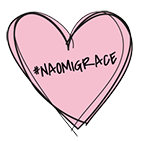Keeping Your Home Safer
The Basics
Water dangers are present in the home and yard.
Any water bearing container is a potential hazard. This can include bathtubs, kiddie pools, toilets, sinks, buckets, washing machines, ice chests, and open fish tanks, in addition to pools and hot tubs.
Potential residential drowning hazards change with age: Children less than one year old regularly drown in bathtubs, buckets, or toilets. Children ages 1-4 most frequently drown in backyard pools.
Never leave a child or children unattended in the bathtub. If you must exit the room, take the child/children with you.
VIDEO: Hidden Dangers Inside and Around the Home.(U.S. Consumer Product Safety Commission)
VIDEO: Drowning can occur in less than an inch of water. This Much Water. (YouTube)
VIDEO: Learn how to recognize a swimmer in trouble: What drowning looks like. (Oasis Pools)
BROCHURE: Water Safety at Home Water Safety at Home (Safe Kids)
RESEARCH: “Please Keep an Eye on Your Younger Sister”: Sibling Supervision and Young Children’s Risk of Unintentional Injury (PubMed.gov)
RESOURCE: Water Safety Bookmarks (Colin’s Hope)
RESOURCE: Home Water Safety Kit (Colin’s Hope)
Action Items
Enroll in water safety, first aid, and CPR courses to understand how to respond quickly in an aquatic emergency. The American Red Cross offers all three types of classes.
Check each room of your home for water hazards.
Check your yard for water hazards such as kiddie pools, buckets, and other containers.
Use physical barriers to restrict contact with any source of water.
Remove ladders from above-ground pools following use.
Affix child-safe door locks to all bathroom and laundry room doors.
If possible, use adult supervion for all water-related activities.
Educate caregivers: Household Safety: Prevent Drowning. (KidsHealth from Nemours)
Educate babysitters: Kids Water Safety (25 Tips All Babysitters Should Know) (Kidsit.com)
Read all the Layers of Protection.
Take and share the Naomi’s Grace Water Safety Quiz.
Dive Deeper
Bath Time
Never leave a child or children unattended in a baby bath, bath seat, bath ring, or bathtub. Maintain constant adult supervision and keep the child within arm’s reach
Gather and assemble the necessary bathing products before the bath. Arrange them within arm’s reach. Keep a phone handy for an emergency but do not be distracted by it or anything else.
If you need to slip out of the room for even a second, take the child with you.
When bath time is over, empty baby baths and bathtubs immediately.
Toilets
Toilet lid locks can prevent children from dropping objects in the toilet. If you use toilet lid locks in your home, show babysitters, grandparents, caregivers, housekeepers, and guests how to use them.
Sinks
For activities that require a full sink, such as laundry, use a child-safe door lock.
Empty all sinks after every use.
Yard Hazards
Reduce yard hazards by restricting access to water sources. For information on isolation fencing, gates, and other physical barriers, see Barriers Around Water.
Remove ladders from above-ground pools when not in use.
Empty kiddie pools, buckets, and other containers promptly after use. Store them upside down in a secure location inaccessible to children.
Be mindful after rain storms. Water may accumulate in unusual locations like potted plants, storage bins, toys, etc.
Do not allow children to swim, play, or engage in any other water-related activity without constant visual supervision from a designated adult Water Watcher , EVEN if they know how to swim.


